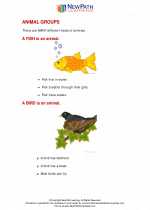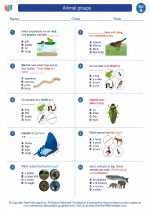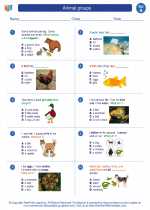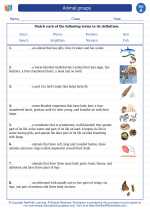What are Animals?
Animals are living organisms that make up the kingdom Animalia. They are multicellular, eukaryotic organisms that are heterotrophic, meaning they obtain their energy by consuming other organisms. Animals come in a wide variety of shapes, sizes, and habitats, and they play important roles in ecosystems around the world.
Characteristics of Animals
Animals share several key characteristics:
- Multi-cellular: Animals are made up of multiple cells, which are organized into tissues and organs.
- Eukaryotic: They have cells with a true nucleus and membrane-bound organelles.
- Heterotrophic: Animals cannot produce their own food and must consume other organisms for energy.
- Motile: Most animals are capable of movement at some stage in their life cycle.
- Reproduction: Most animals reproduce sexually, although some can reproduce asexually.
Classification of Animals
Animals are classified into various groups based on their characteristics:
- Vertebrates: Animals with a backbone, including mammals, birds, reptiles, amphibians, and fish.
- Invertebrates: Animals without a backbone, such as insects, spiders, worms, and mollusks.
- Warm-blooded and Cold-blooded: Animals are also classified based on their body temperature regulation.
- Aquatic and Terrestrial: Animals are categorized based on their habitat, whether they live in water or on land.
Importance of Animals
Animals play vital roles in the environment and in human societies. They contribute to ecological balance, pollination of plants, seed dispersal, and the food chain. Additionally, many animals are kept as pets, provide food, and are studied for scientific research and medical advancements.
Study Guide
Here are some key points to remember when studying animals:
- What are the main characteristics of animals?
- How are animals classified?
- What are the roles of animals in the environment?
- Can you give examples of vertebrates and invertebrates?
- Why are animals important to humans?
It's important to understand the diversity and significance of animals in our world, as well as their impact on ecosystems and human life.
.◂Science Worksheets and Study Guides First Grade. Animal groups

 Worksheet/Answer key
Worksheet/Answer key
 Worksheet/Answer key
Worksheet/Answer key
 Worksheet/Answer key
Worksheet/Answer key
 Vocabulary/Answer key
Vocabulary/Answer key
